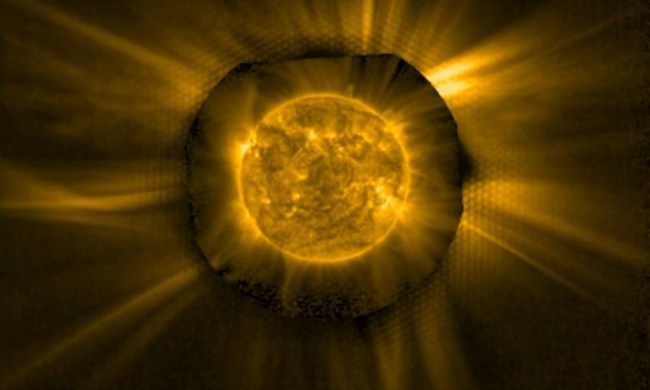Solar eclipses have fascinated humanity for many thousands of years, inspiring monuments and mythologies across the globe. And even in our scientific era, the sight of an eclipse is often awe-inspiring.
Now, astronomers at the European Space Agency (ESA) want to induce this event, using tandem satellites to block out the sun and study its elusive outer atmosphere for hours on end.
Set to launch in 2019, ESA’s Proba-3 is the first mission of its kind. In precise formation, a first satellite will orbit just 150 meters (500 feet) further from Earth than the second satellite, and the two will remain within a relative position within just 1 millimeter (0.03 inches) of error.
The first satellite, the “occulter,” will have an umbrella that’s just large enough to block much of the sun when viewed from the second satellite, the “coronagraph.” Since the sun is 1 million times brighter than its corona, this eclipse inducing effect is vital and must be kept close.
“We have two scientific instruments aboard,” Damien Galano, Proba-3 Payload Manager, said in a press release. “The primary payload is ASPICS, a coronagraph to observe the corona in visible light while the DARA radiometer on the occulter measures the total solar irradiance coming from the sun – a scientific parameter about which there is still some uncertainty.”
Although the primary mission is to observe the sun’s corona, the ESA also hopes Proba-3 will prove that two small satellites can do the job of one large satellite, a demonstration that would help lower resources needed for future missions.
“The precise formation flying demonstration mission … will bring a new set of eyes on the sun and a new way of designing space missions,” Franco Ongaro, head of the European Space Research and Technology Centre, said in a promotional video.


